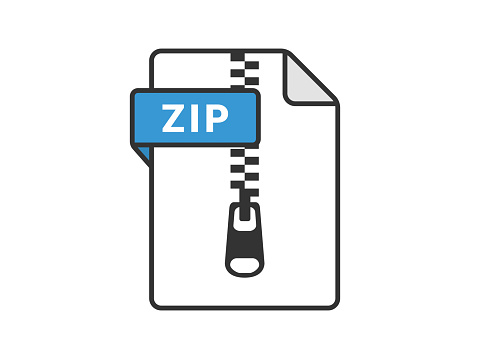Description
Operating Systems
In this assignment, you will handle student records in a file named
“student_record”. Each record in the file consists of student number of integer type
and student name of 32 characters, so the size of each record is 36 bytes. In this
assignment, you need to write a Java program to store the following four records
into the file:
72 James
56 Mark
87 John
30 Phillip
44 Andrew
Then, the program sorts the records in the file using any simple sorting algorithm
such as bubble sorting, with the first field – student number, and prints all records in
the file after sorting. When the program sorts the student records, the program
should not read all records in memory at once. The program should move records in
the file. For example, after the program reads the first two records, it may switch the
records (because 72 > 56) and write them in the same position in the file.
You need to submit Java programs and screen shots that show how your
programs work.
2 Assignment 2
TRU Open Learning
Manipulating Files in Java
The following sections are prepared to help you understand how to manipulate files
in Java application programs.
1. File
Basic idea to use files
o Open – in Java, create an object for the given file
o Read; write
o Close
Sequential access
o Just keep reading or writing
Random access
o Read or write any place in a file
API reference: http://docs.oracle.com/javase/7/docs/api/java/io/File.html
2. Sequential access
2.1 Writing
import java.io.*;
class FileWriteStreamTest {
public static void main (String[] args) {
FileWriteStreamTest f = new FileWriteStreamTest();
f.writeMyFile();
}
void writeMyFile() {
DataOutputStream dos = null;
String record = null;
int recCount = 0;
try {
File f = new File(“mydata.txt”);
if (!f.exists())
f.createNewFile();
FileOutputStream fos = new FileOutputStream(f);
BufferedOutputStream bos = new BufferedOutputStream(fos);
COMP 3411: Operating Systems 3
TRU Open Learning
dos = new DataOutputStream(bos);
dos.writeBytes(“Test\n”);
dos.writeBytes(“Welcome\n”);
dos.writeBytes(“Operating System\n”);
dos.writeBytes(“File System\n”);
} catch (IOException e) {
System.out.println(“Uh oh, got an IOException error!” +
e.getMessage());
} finally {
// if the file opened okay, make sure we close it
if (dos != null) {
try { dos.close(); }
catch (IOException ioe) { }
}
}
}
}
2.2 Reading
import java.io.*;
class FileReadStreamTest {
public static void main (String[] args) {
FileReadStreamTest f = new FileReadStreamTest();
f.readMyFile();
}
void readMyFile() {
DataInputStream dis = null;
String record = null;
int recCount = 0;
try {
File f = new File(“mydata.txt”);
if (!f.exists()) {
System.out.println(f.getName() + ” does not exist”);
return;
}
4 Assignment 2
TRU Open Learning
FileInputStream fis = new FileInputStream(f);
BufferedInputStream bis = new BufferedInputStream(fis);
dis = new DataInputStream(bis);
while ( (record=dis.readLine()) != null ) {
recCount++;
System.out.println(recCount + “: ” + record);
}
} catch (IOException e) {
System.out.println(“Uh oh, got an IOException error!” +
e.getMessage());
} finally {
// if the file opened okay, make sure we close it
if (dis != null) {
try { dis.close(); }
catch (IOException ioe) { }
}
}
}
}
3. Random access
import java.io.*;
class FileRandomAccessTest {
public static void main (String[] args) {
FileRandomAccessTest f = new FileRandomAccessTest();
f.readWriteMyFile();
}
void readWriteMyFile() {
RandomAccessFile raf = null;
String s = null;
try {
File f = new File(“mydata.txt”);
if (!f.exists()) // check if the file exists
f.createNewFile(); // create a new file
COMP 3411: Operating Systems 5
TRU Open Learning
raf = new RandomAccessFile(f, “rw”); // open a file for random
access with “r”, “rw”
if (raf.length() > 7) { // the size of the file
raf.seek(7); // move the file pointer
System.out.println(raf.readLine()); // read a line from
the file pointer
s = raf.readLine();
System.out.println(s);
raf.seek(raf.getFilePointer() – s.length()); // get the
file pointer
raf.writeBytes(“Test RamdomAccessFile\n”); // write bytes
}
} catch (IOException e) {
System.out.println(“Uh oh, got an IOException error!” +
e.getMessage());
} finally {
// if the file opened okay, make sure we close it
if (raf != null) {
try { raf.close(); } // close the file
catch (IOException ioe) { }
}
}
}
}
Assignment Marking Criteria Weighting
No syntax error: All requirements are fully implemented without syntax
errors. Submitted screen shots will be reviewed with source code. /5
Correct implementation: All requirements are correctly implemented
and produce correct results Submitted screen shots will be reviewed
with source code.
/5
Total /10



